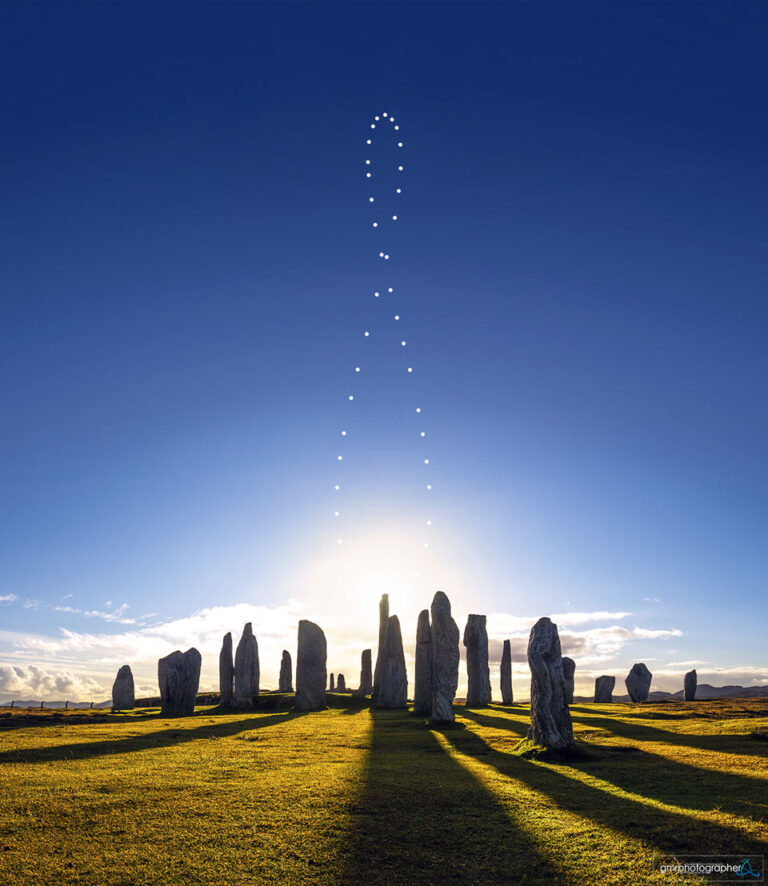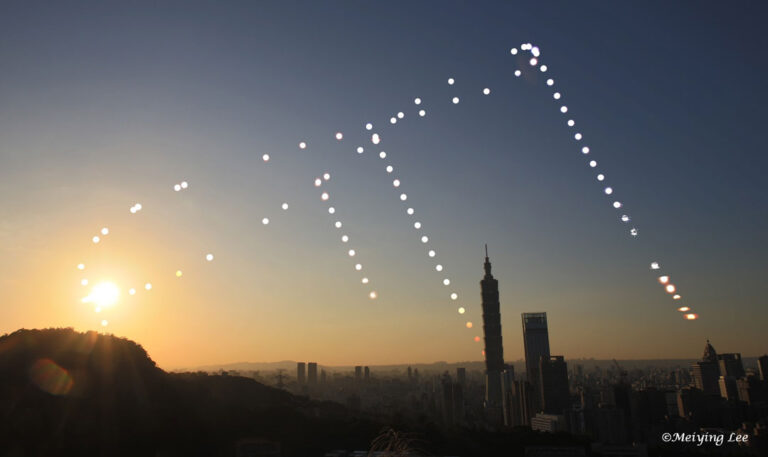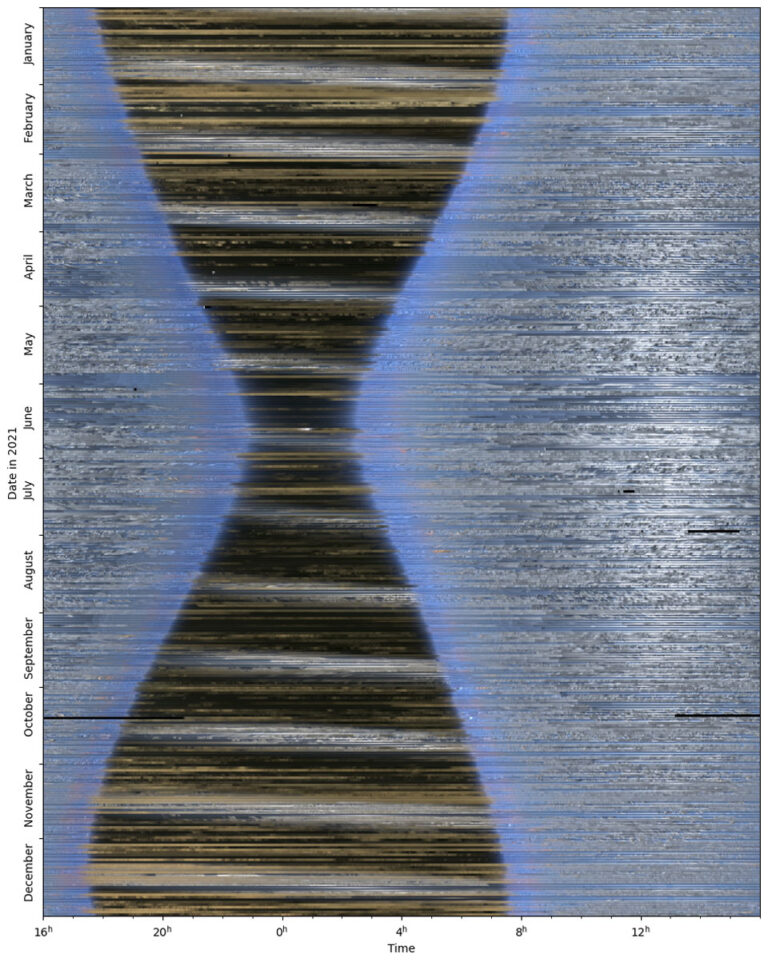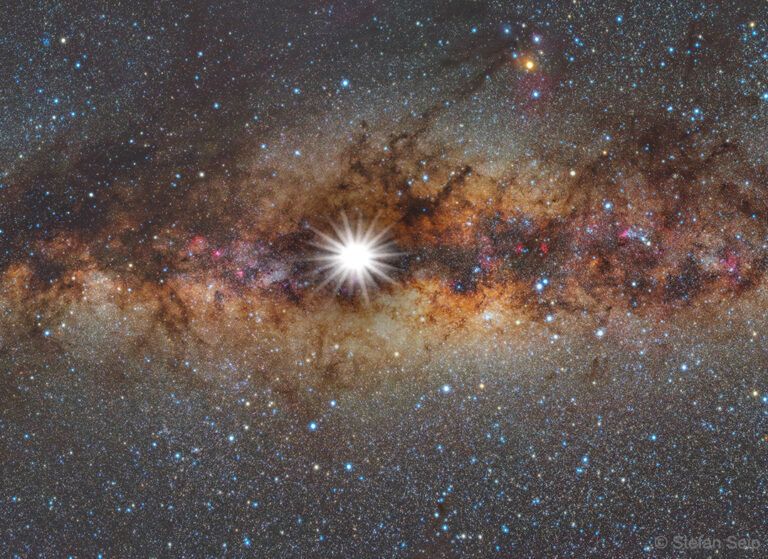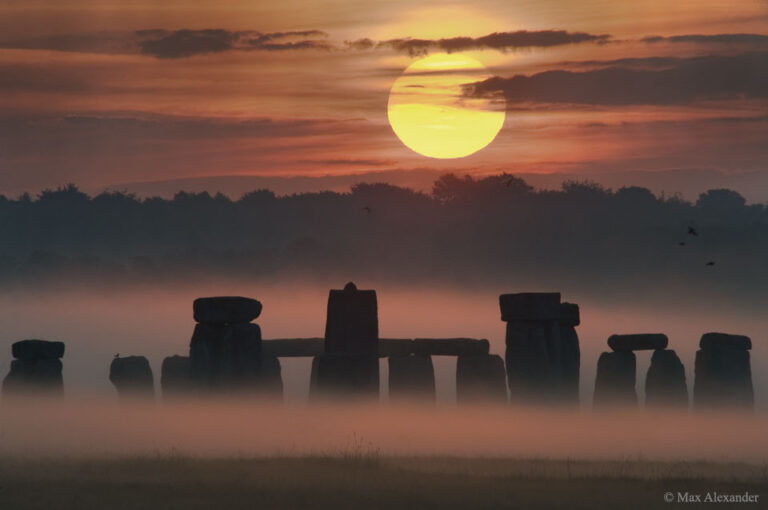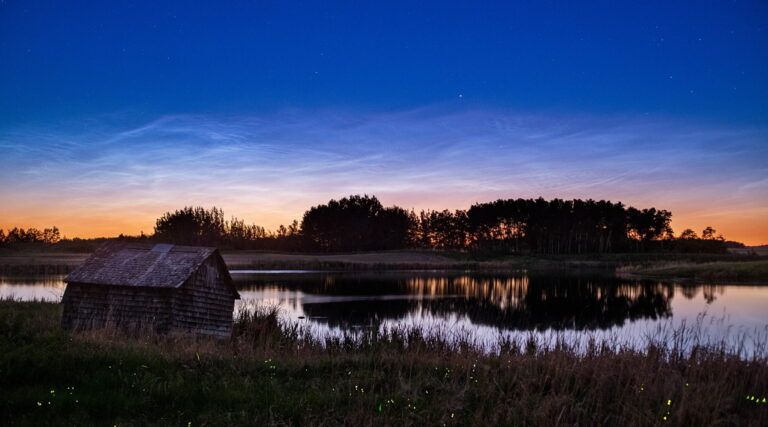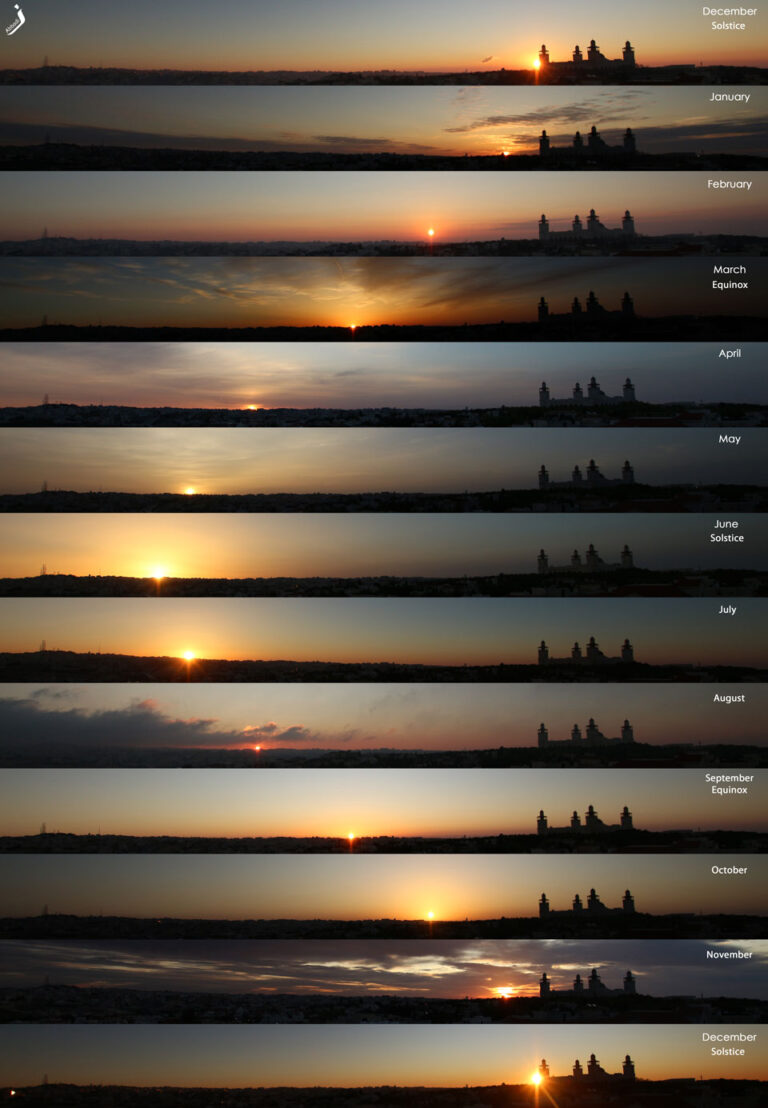秋分: 卡拉尼什巨石阵上空的日行迹
2022年9月18日 Analemma over the Callanish Stones Image Credit & Copyright: Giuseppe Petricca Explanation: If you went outside at the same time every day and took a picture that included the Sun, how would the Sun’s position change? A more visual answer to that question is an analemma, a composite image taken from the same spot at the same time over the course of a year. The featured analemma was composed from images taken every few days at noon near the village of Callanish in the Outer Hebrides in Scotland, UK. In the foreground are the Callanish Stones, a stone circle built around 2700 BC during humanity’s Bronze Age. It is not known if the placement of the Callanish Stones has or had astronomical significance. The…

